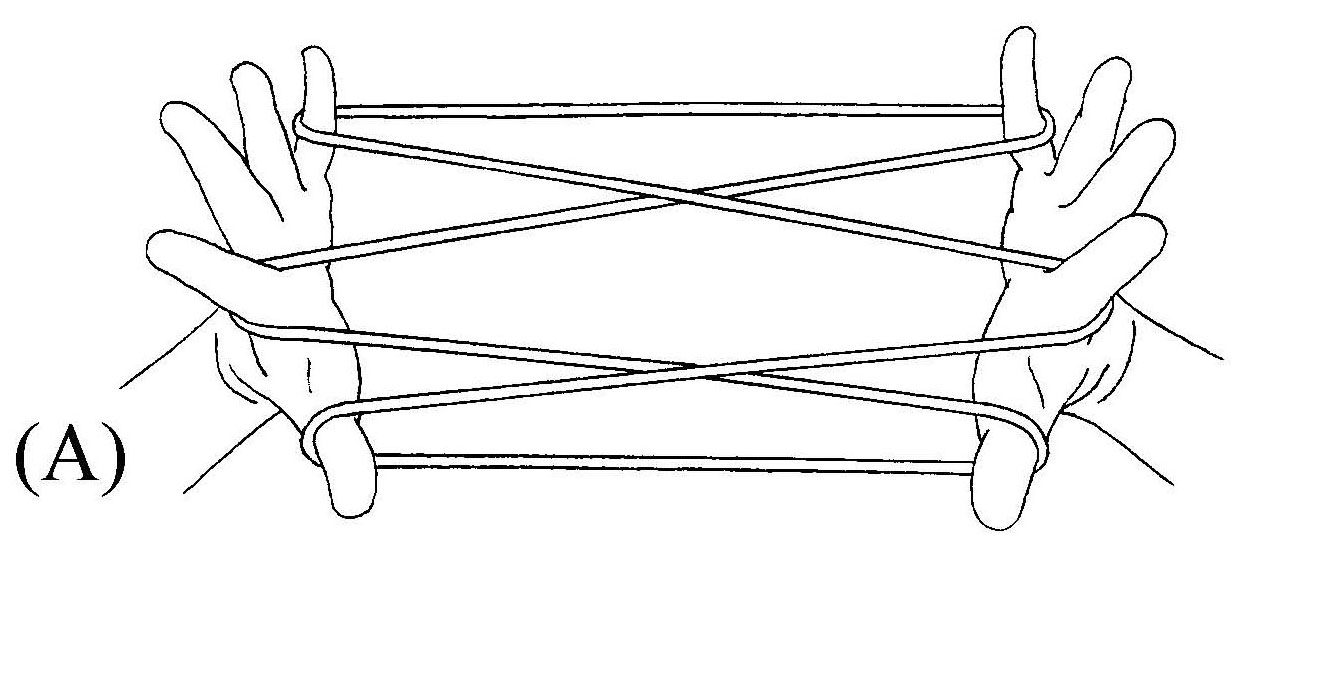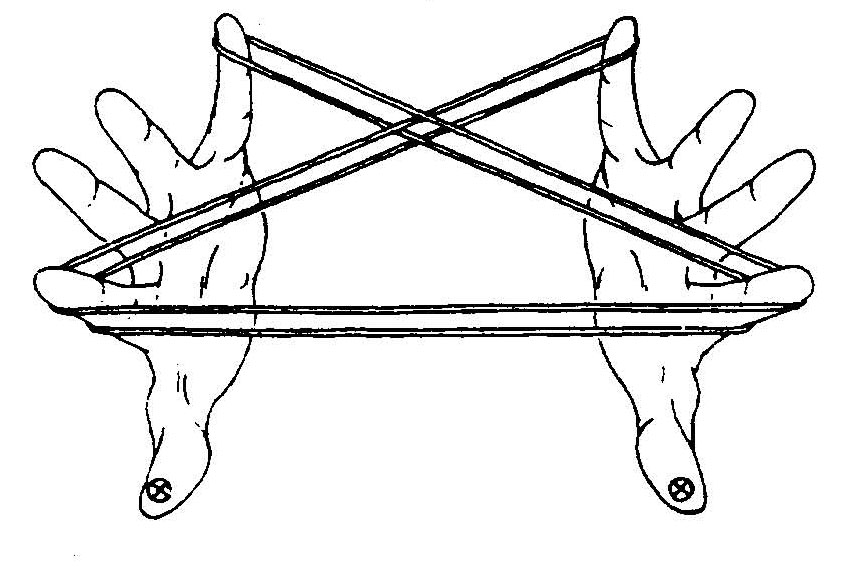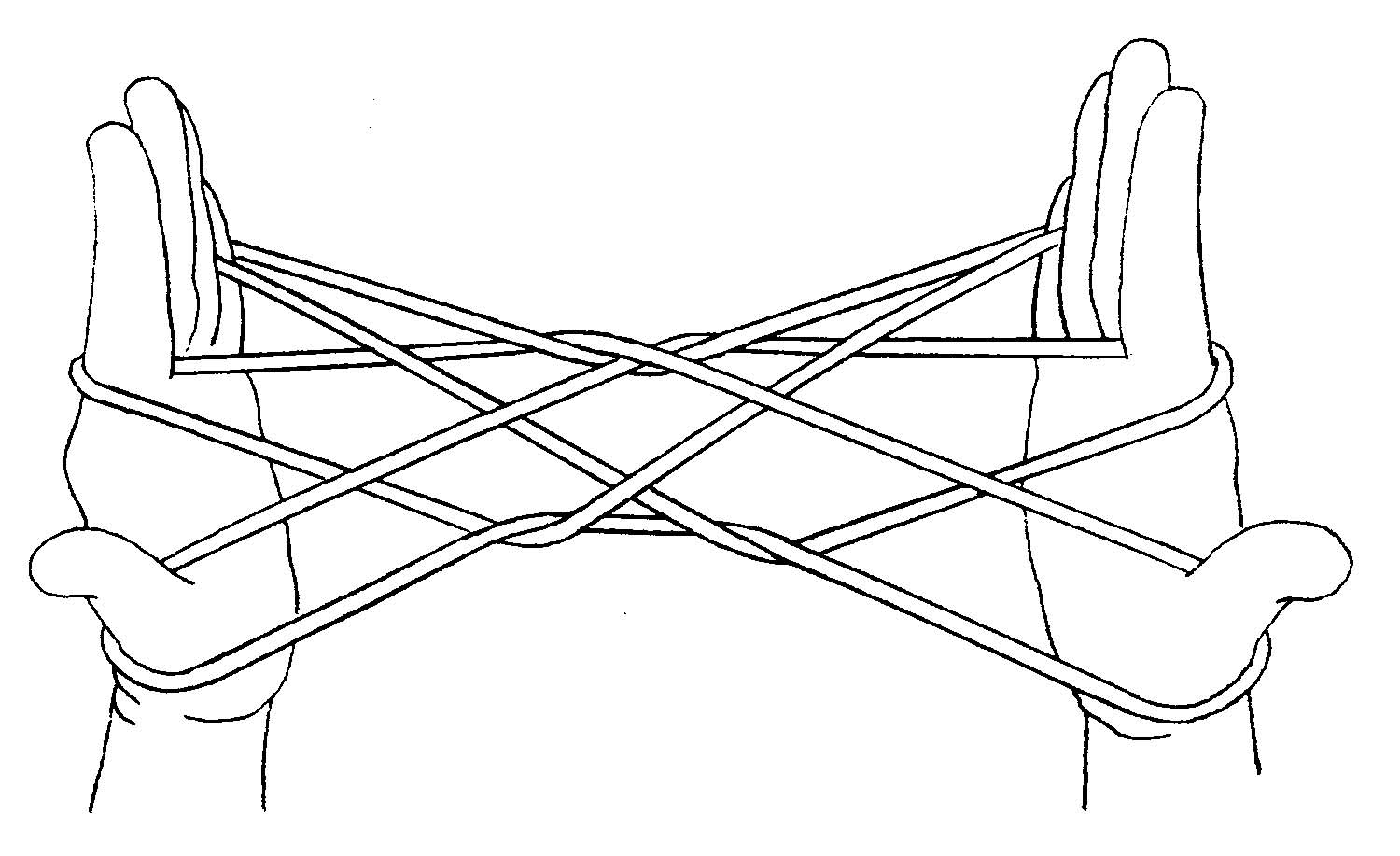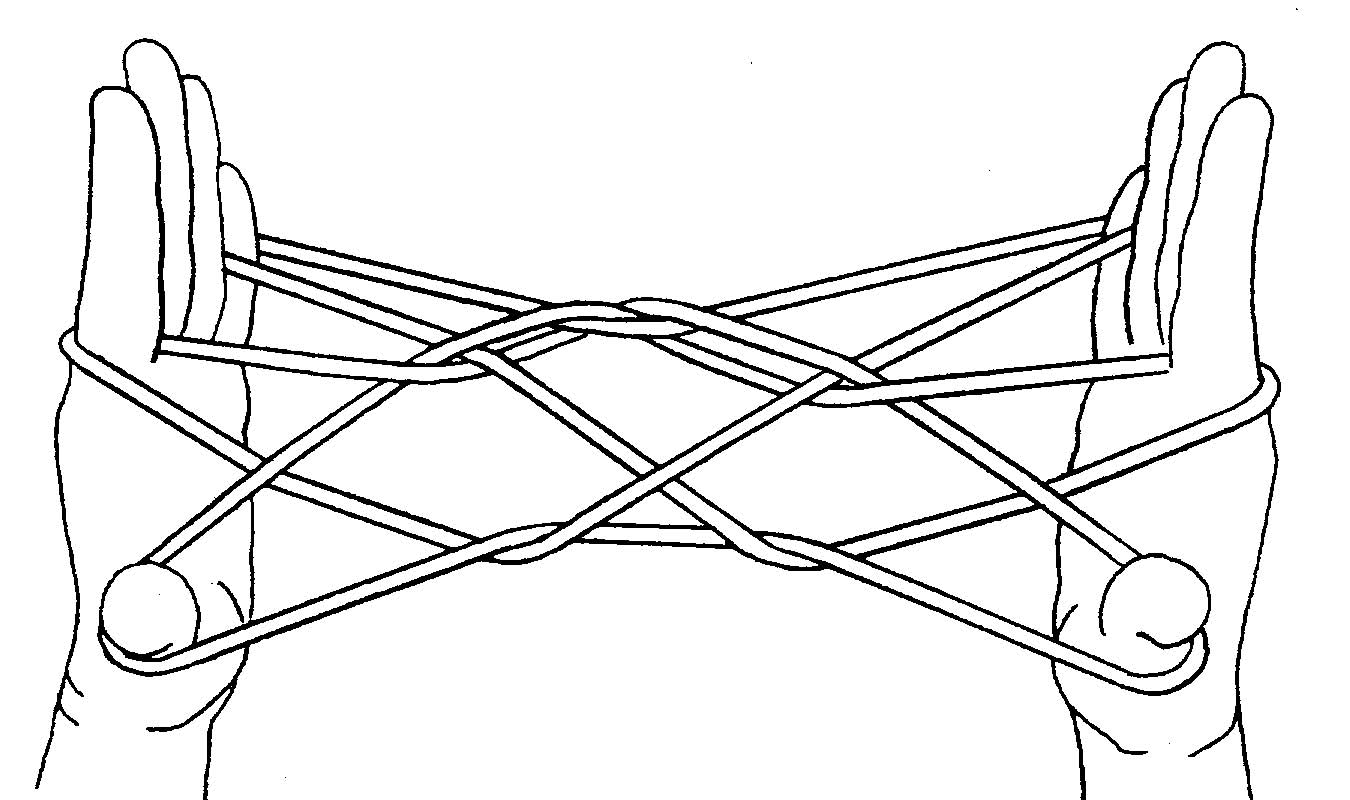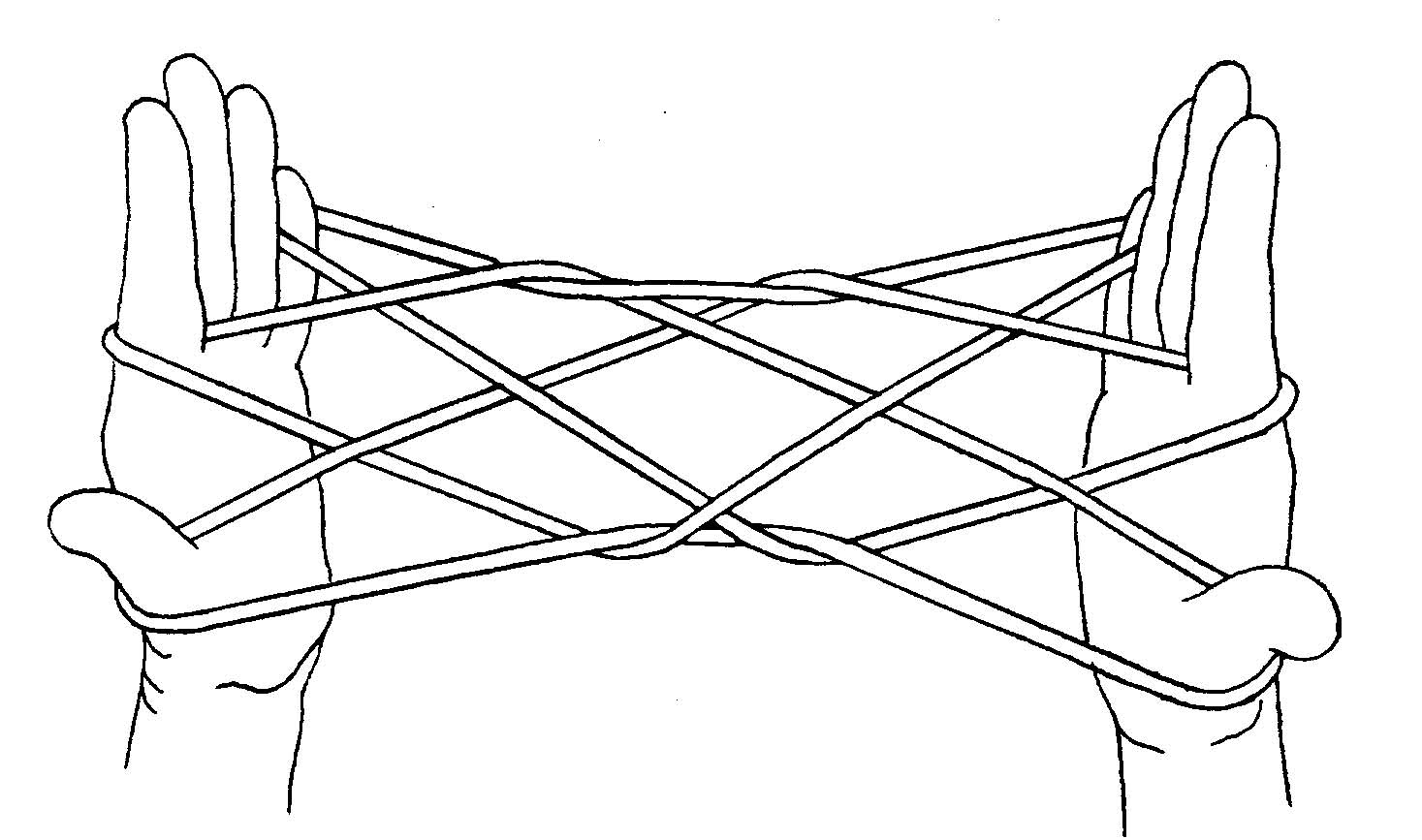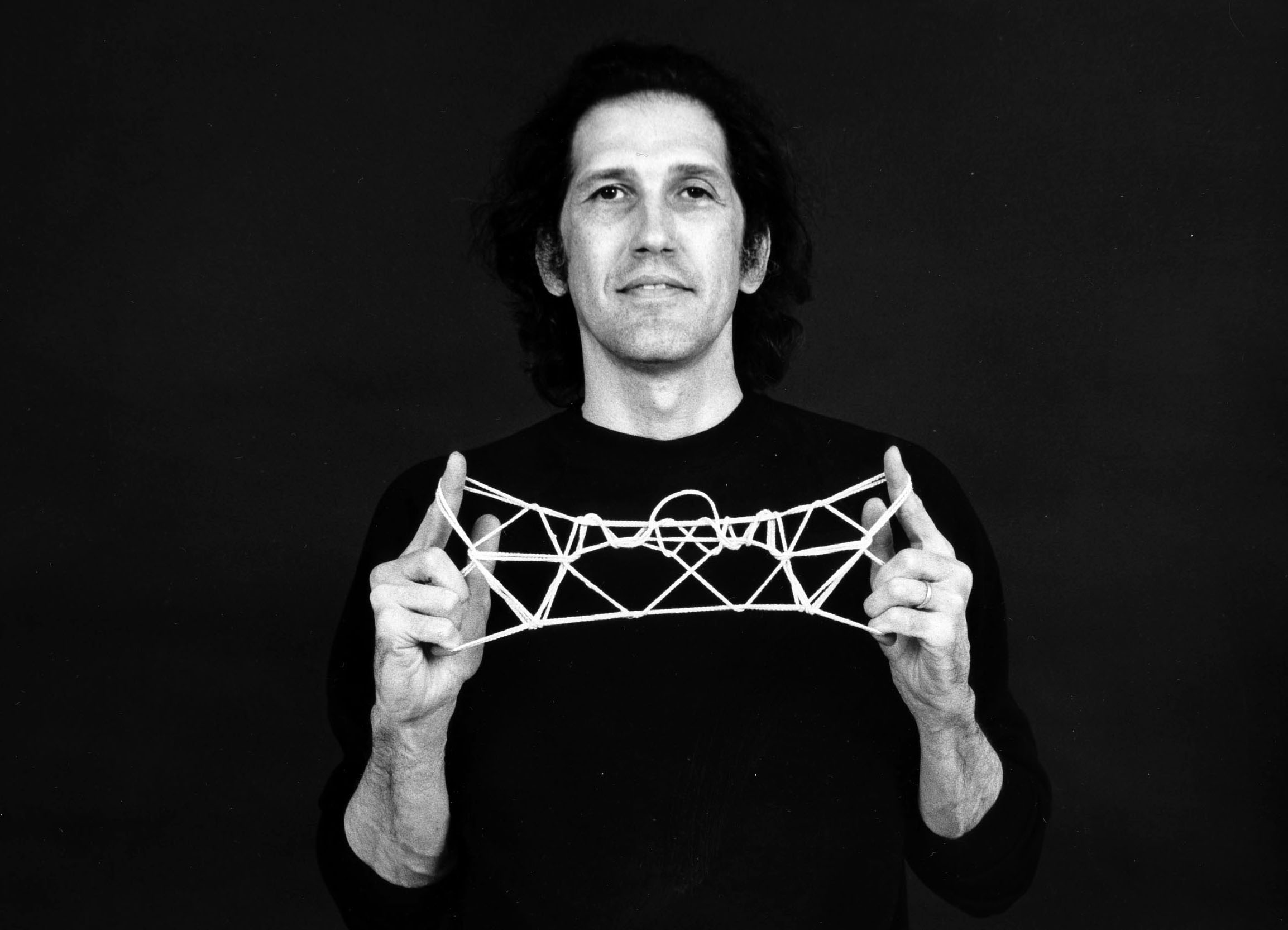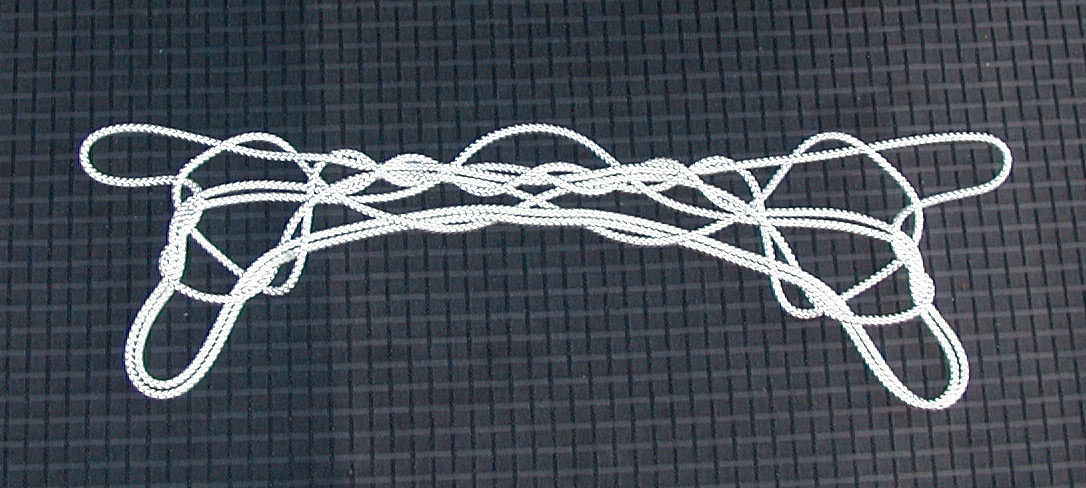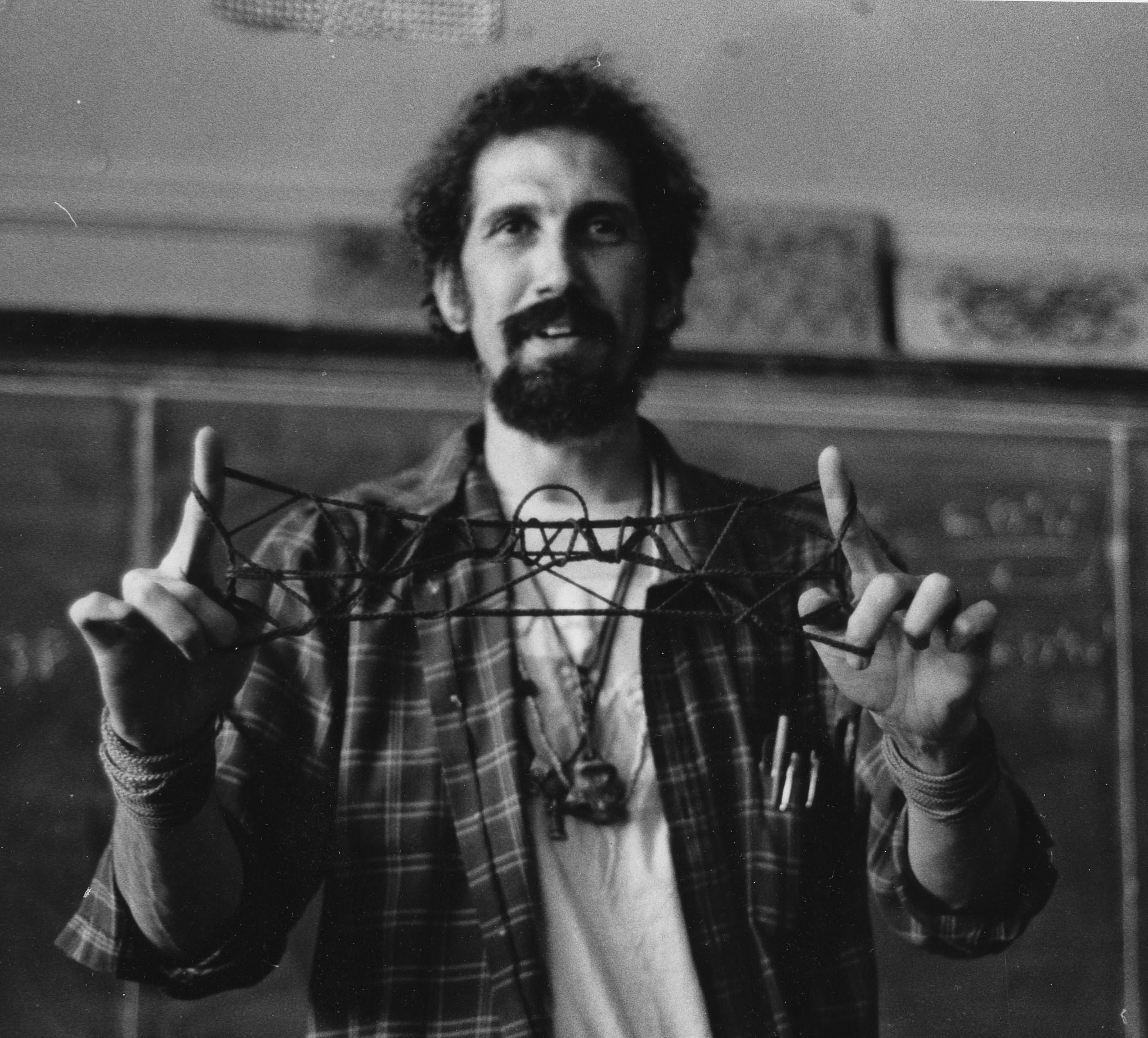Before students can start altering and combining various weaves in the Net system, they need to understand the function of each weave and how it affects the final design. By dividing the construction methods of the Inuit, Navaho, and Klamath Nets into phases, similarities and differences are easier to comprehend.
The loom for all three is nothing more than Opening A, a simple three-loop opening in which the near thumb and far little finger strings are transverse. Compare this with the Ten Men three-loop loom , in which the two near index strings are transverse.
In the Ten Men system the first and second weaves are the same, but in the North American Net system the two weaves differ. Furthermore, for each of the three North American Nets, part 1 of the first weave differs:
First Inuit Weave, part 1: thumb goes down through index loop and retrieves near little finger string.
First Navaho Weave, part 1: thumb goes over index loop and retrieves near little finger string.
First Klamath Weave, part 1: thumb goes over near index string and retrieves far index string.
For each North American Net, part 2 of the first weave is essentially the same: Middle and/or index finger goes “into the well” and retrieves one of the lower thumb strings; thumb drops both loops.
The second weave for each North American Net is identical: Thumb goes through (lower) index loop from above and retrieves far little finger string. In practice, i often finish the figure as follows: Do the first half of Fixing the Bottom , then Clean the Top. Now go back and do the rest of Fixing the Bottom (i.e., draw the bottom transverse string through the loop on the three lesser fingers, etc.). This modification creates a much sharper extension and allows complex figures like Sunrise over Klamath Bridge to blossom.
During the Loop Shifting Phase the methods begin to diverge.
In making the Inuit Net, the index loop is dropped (which seems like a mistake if you’re used to making the Navaho and Klamath Nets!), then the remaining loops are arranged so that the upper near index string and far little finger string are transverse.
In making the Dine’ Net the little finger loop is dropped and the remaining loops arranged so that the lower near thumb string and upper far index string are transverse.
In making the Klamath Net, the little finger loop is likewise dropped, but the remaining loops are arranged so that the near thumb string and far little finger string are transverse.
For all three nets the methods for Fixing the Bottom and Cleaning the Top differ significantly, but all produce similar outcomes: in the bottom row, a double wrap fuses the diamond nearest each hand to the palmar string, whereas in the top row, a single wrap occurs at the palmar string.
At first I was bothered by all the similarities I found among the three North American Nets: how could three widely separated culture groups invent complex figures that so closely resembled one another? The answer was revealed to me one day while visiting the Museum of the American Indian in New York with my daughter. The tour guide told us that until 1000 years ago the Dine’ (Navajo) people lived in western Canada, just south of land occupied by the Inuit. And just south of the Dine’ lived the Klamath people. So the three nets can be thought of as dialects or variations of a parent figure known to the ancestors of all three groups.
Comparing the Cores
As mentioned above, the first and second weaves give rise to the heart or core of each design. A good way to compare the cores is to complete the first and second weaves, then transfer the loops so that an Opening A-like configuration results and the design lays flat. For reasons that will become obvious later, I call this the Continuation Move.
Continuation Move (CM)
After completing the first and second weaves of the Inuit, Navaho, or Klamath Net, drop the little finger loop and roll the middle finger loop (or upper index loop in the Klamath case) onto the little finger (i.e., transfer the middle finger loop onto the thumb, inserting the thumb from below, then transfer the upper thumb loop to the little finger, inserting the little finger from above — this accomplishes a +1/2 rotation of the transferred loop).
demonstration of the continuation move
An Opening A-like configuration means you have at least one loop on each thumb, index, and little finger, and the near thumb and far little finger strings are transverse or “straight-across” strings. It is important to understand this definition since I use the term frequently throughout my discussions. When applied to the Inuit Net, the result is below; when applied to the Dine’ Net, the result is also below; when applied to the Klamath Net, the result is also below.
You can further explore the differences by dropping the index loop and extending: the Inuit core dissolves; the Navaho core gives a double-walled diamond with complex crossings at the loop junctions, and the Klamath core gives a double-walled diamond with simple crossings at the loop junctions.
I-1 and I-2 followed by the Continuation Move
N-1 and N-2 followed by the Continuation Move
K-1 and K-2 followed by the Continuation Move
things to consider
later lessons will include sunset over klamath bridge along with other beautiful figures.

